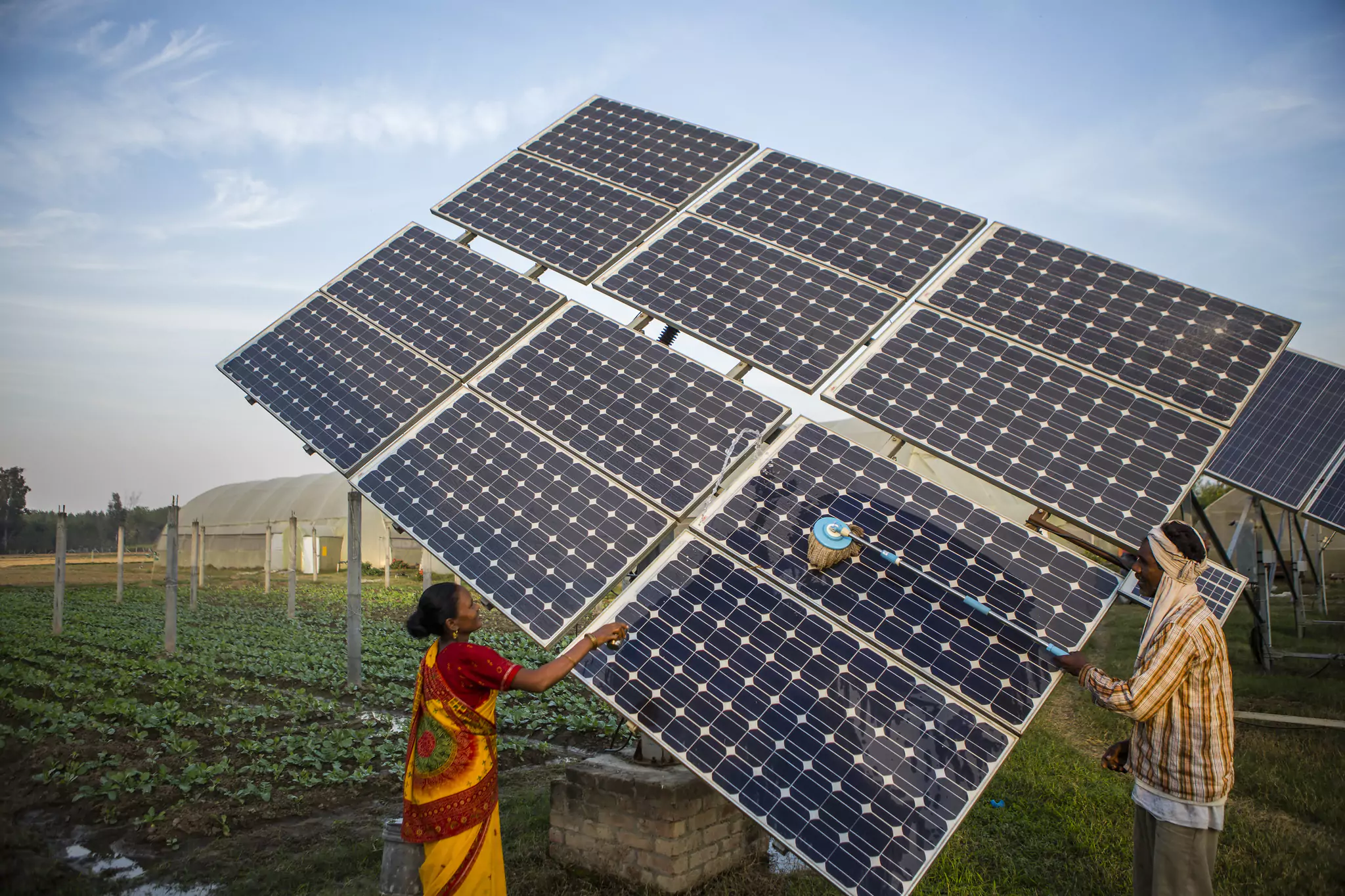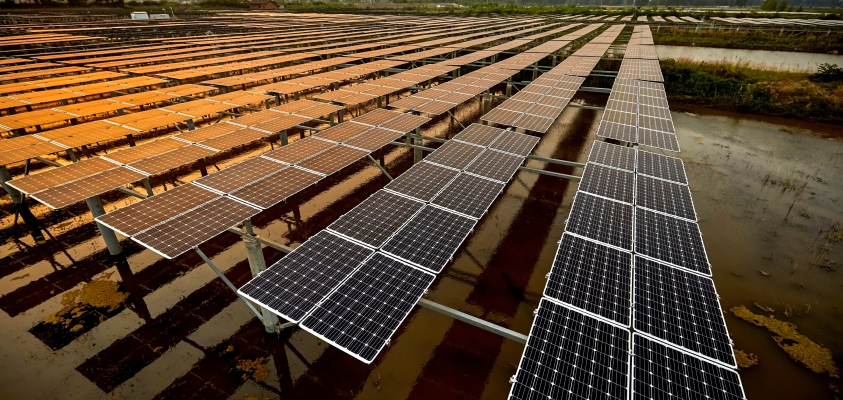India’s Push for Decentralized Solar Energy
India’s solar energy sector is experiencing a significant transformation, driven by ambitious government policies, technological advancements, and growing public demand for clean energy solutions. The government's increased focus on decentralized solar energy — particularly rooftop solar installations — is aimed at reducing grid dependency, increasing energy security, and contributing to India's climate commitments under the Paris Agreement.
The launch of the PM Surya Ghar Muft Bijli Yojana in February 2024 marks a historic milestone in India's solar journey. The scheme aims to provide direct financial support for residential rooftop solar installations, helping households generate their own electricity and reduce reliance on coal-based power. Additionally, incentives for domestic manufacturing, net metering policies, and state-level financial support are expected to significantly drive adoption in 2024 and 2025.
Background and Context
Global Solar Energy Landscape
- The global solar energy market reached a capacity of 1,000 GW in 2023.
- India is currently the 5th largest solar market in the world, after China, the US, Japan, and Germany.
- Solar energy accounted for over 28% of global renewable energy generation in 2023.
Growth of Solar Energy in India
India’s solar capacity growth has been significant over the past decade:
- Total installed solar capacity:
- 2015: 5 GW
- 2018: 28 GW
- 2023: 70 GW
- 2030 Target: 280 GW
- India aims to install 500 GW of total renewable energy capacity by 2030, with solar contributing more than 55%.
- Rooftop solar currently contributes around 11 GW of total installed capacity (approximately 15% of total solar capacity).
Dependency on the National Grid
- Over 70% of India’s electricity is generated from coal-fired power plants.
- The increasing demand for electricity (+6% annually) puts pressure on the national grid.
- Rural and semi-urban areas face frequent power outages due to grid instability.
- Decentralized solar energy offers a solution to reduce dependence on the national grid, increase energy independence, and enhance grid stability.
India’s Climate and Renewable Energy Commitments
India’s solar expansion is driven by domestic energy needs and international commitments:
- Under the Paris Agreement, India pledged to:
- Reduce emissions intensity of GDP by 45% by 2030 (compared to 2005 levels).
- Increase non-fossil fuel-based power generation capacity to 50% by 2030.
- Achieve net-zero carbon emissions by 2070.
- Solar energy is key to achieving these targets while meeting growing energy demand.
Major Policy Frameworks and Regulatory Support
India’s push for decentralized solar is supported by a combination of central government schemes, state-level policies, and global partnerships:
PM Surya Ghar Muft Bijli Yojana (2024)
Launched: February 29, 2024
Total Budget: ₹75,000 crore ($9 billion)
Goal:
- Install rooftop solar panels in 10 million households by 2026.
- Generate 30 GW of residential rooftop solar capacity by 2026.
- Provide free electricity for households generating up to 300 units/month.
Subsidy Structure:
| Capacity | Subsidy Amount | Consumer Contribution |
|---|---|---|
| Up to 2 kW | ₹75,000 | 30% of total cost |
| 2–3 kW | ₹1,50,000 | 30% of total cost |
| Above 3 kW | 40% of installation cost | Based on capacity |
Implementation Strategy:
- Central Government: Covers 50% of installation costs.
- State Governments: Cover 20% of installation costs.
- Households: Bear only 30% of installation costs.
- Net Metering: Surplus power can be sold back to the grid.
Expected Impact:
- Direct cost savings on monthly electricity bills.
- Increased energy independence for urban and rural households.
- Reduced pressure on the national grid during peak hours.

Rooftop Solar Programme Phase II (Extended to 2025)
- Initially launched in 2019 with a total outlay of ₹11,814 crore ($1.4 billion).
- Provides up to 40% subsidy for residential rooftop installations.
- Focus on simplifying the installation and approval process:
- Single-window clearance system introduced in 2022.
- Online portal for application and approval tracking.
- Extension until 2025 with increased financial support.
Net Metering and Feed-in Tariffs (2024 Update)
- Households can sell surplus electricity to the grid at regulated tariffs:
- ₹3.5–₹4.2/kWh based on region and grid connectivity.
- Guaranteed purchase agreements for 10–15 years.
- Simplified net metering registration via the National Portal for Rooftop Solar.
- State governments responsible for tariff adjustments based on demand.
Domestic Manufacturing Incentives (PLI Scheme)
- ₹24,000 crore ($2.9 billion) allocated under the Production-Linked Incentive
(PLI) Scheme to promote domestic manufacturing of:
- Solar PV cells
- Solar modules
- Inverters and storage solutions
- Goal:
- Produce 10 GW of solar panels annually by 2025.
- Reduce import dependency on Chinese modules (currently over 80%).
- Create over 300,000 new jobs in manufacturing and installation.
State-Level Solar Incentives
| State | Subsidy/Benefit | Target/Impact |
|---|---|---|
| Gujarat | ₹10,000/kW subsidy | Expected to increase residential adoption by 30% |
| Maharashtra | Property tax exemption | Incentivizes installation for high-value homes |
| Delhi | Low-interest loans | Expands solar adoption among middle-income groups |
| Rajasthan | Free solar for rural households | Enhances rural electrification |
| Tamil Nadu | 50% subsidy on panels | Supports adoption in high-density areas |
Technological Innovations and Market Trends
Smart Grid Integration
- Advanced metering infrastructure (AMI) rollout under Green Energy Corridor
- Enhanced load balancing using AI-based predictive modeling.
- Improved fault detection and automated outage management.
Battery Storage and Hybrid Systems
- Increased adoption of lithium-ion and sodium-ion batteries.
- Combination of solar + battery storage + grid connection to increase reliability.
- Development of solar-based microgrids in rural areas.
Cost Reduction and Efficiency Improvements
- Solar module costs have fallen by over 70% since 2010.
- Average installation cost:
- ₹40,000–₹50,000/kW in 2024
- Expected to decline by 10–15% by 2025
- Increased use of high-efficiency PERC (Passivated Emitter and Rear Contact) cells.
Challenges and Risks
| Challenge | Impact | Solution |
|---|---|---|
| High Installation Costs | Reduced adoption in low-income areas | State-backed loans |
| Grid Overload from Surplus Power | Grid instability during peak generation | Smart grid + storage |
| Import Dependency | Vulnerability to supply chain disruptions | Strengthen domestic manufacturing |
Future Outlook (2025 and Beyond)
- Rooftop solar capacity to reach 30 GW by 2025.
- Domestic manufacturing to supply 70% of India's solar modules.
- Reduction in coal-based power generation by 15%.
India’s push for decentralized solar energy represents a strategic shift toward energy independence and environmental sustainability.













